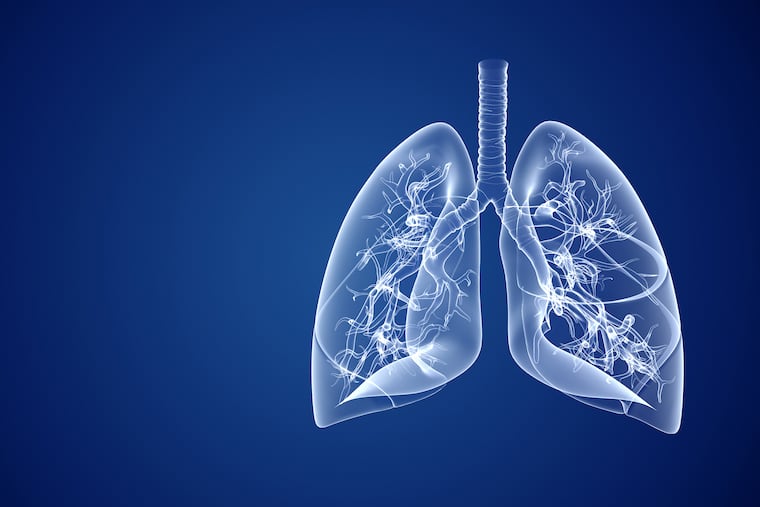My doctor said I have a lung nodule. What does that mean, and should I be worried?
Nearly 95% of lung nodules are benign, according to the American Thoracic Society.

If you’ve had a recent chest X-ray or CT scan, your doctor may have told you that a nodule was found on your lung.
You are not alone. About 50% of patients who undergo CT screening for lung cancer are found to have a lung nodule, according to the American Thoracic Society (ATS).
A nodule is a collection of abnormal cells. They can be found in patients of all ages and racial backgrounds. On scans, a nodule can look like a spot or shadow in the lung. I tell my patients to imagine that the lungs feel airy, like a sponge, and a nodule is a solid mass, as if you were to put a marble in the sponge. Nodules are typically 5 to 10 millimeters in diameter — a little smaller than a frozen pea.
Our lungs are exposed to the environment all the time, and if we inhale something they don’t like, the lungs respond by walling off the irritant, sometimes creating scar tissue. This process is similar to an injury on the skin that might form a scar after it is healed.
This might sound scary. But nearly 95% of lung nodules are benign, meaning that they are not cancerous, according to the ATS. Most are the result of past respiratory illness or infection, smoking, environmental or occupational exposure, or other causes that are not cancer.
But in the instance that a nodule is cancerous, catching it early provides the best opportunity for treatment.
» READ MORE: Medical mystery: Why did her chronic cough linger for a decade?
Yet most people with a lung nodule have no idea — they rarely cause symptoms — and the nodules are often discovered during a chest X-ray or CT scan ordered for an unrelated reason. Fortunately, more nodules are being discovered after the U.S. Preventive Services Task Force recently expanded its guidelines on who should be screened for lung cancer, making more people eligible for a yearly low-dose CT scan.
Once a lung nodule is identified, you’ll likely see a pulmonologist who can evaluate whether it’s cancerous. Your doctor may recommend further testing, which could include more specialized imaging such as a PET scan.
Most nodules don’t require treatment. Your doctor will likely suggest monitoring a small nodule with subsequent CT scans, usually at three, six, or 12 months, to ensure it doesn’t grow. This approach is also known as active surveillance.
» READ MORE: Medical mystery: Breathing problems developed during pregnancy
If a nodule gets larger over time, a sign that it could be cancer, it generally requires further evaluation, which likely involves a biopsy. Most times, if a nodule is found to be cancer, it is removed by surgery. Sometimes, though, even noncancerous nodules are removed. And sometimes only after a nodule is removed is it found to be cancerous. It’s important to talk to your doctor about your options and discuss the best plan for you.
The bottom line: While most lung nodules are not cause for concern, they should never be ignored. Don’t be afraid to talk with your doctor about any concerns you might have.
John M. Travaline is the director of the Pulmonary Procedure Unit at Temple University Hospital and a professor of thoracic medicine and surgery at Lewis Katz School of Medicine at Temple University.